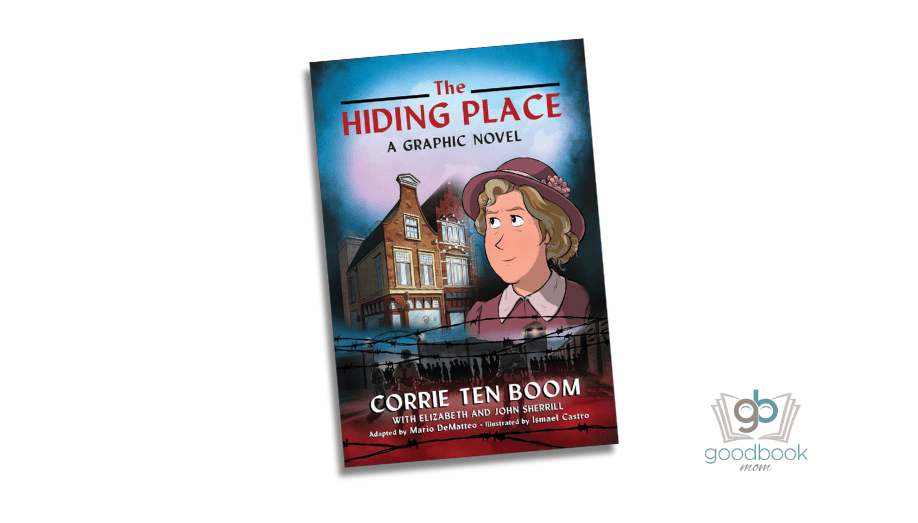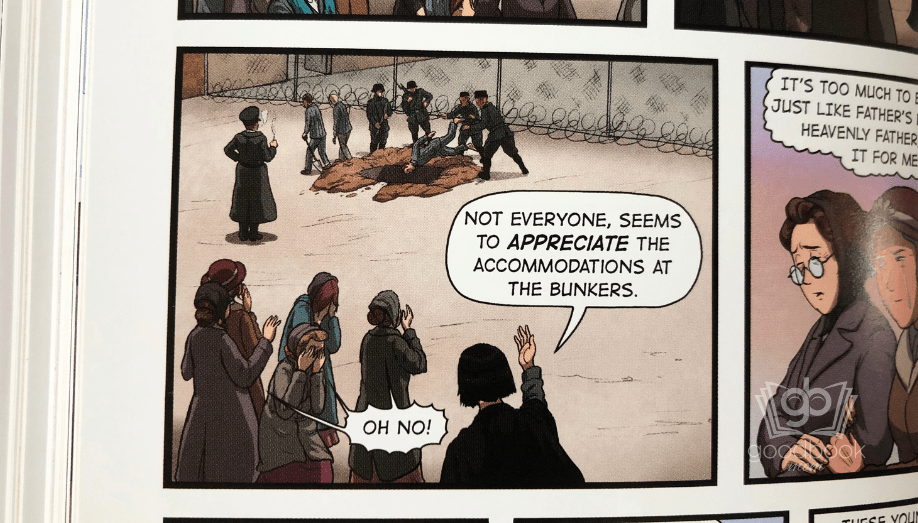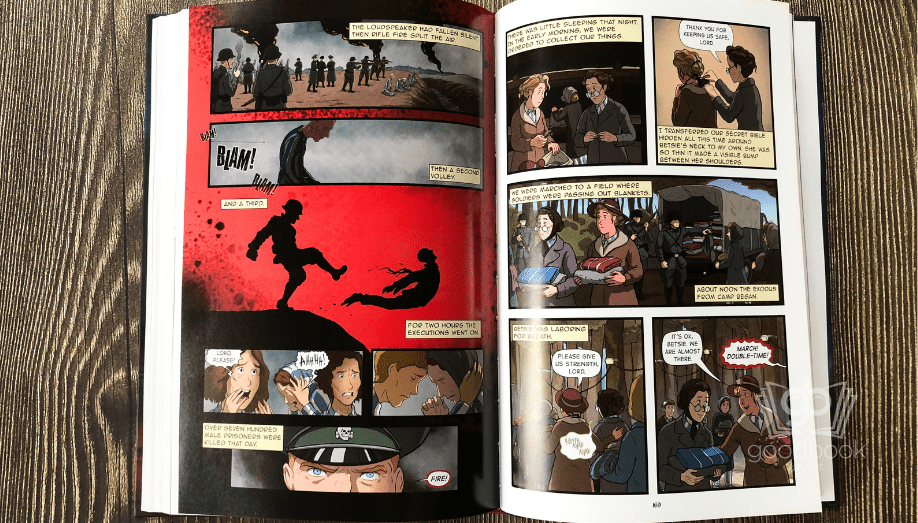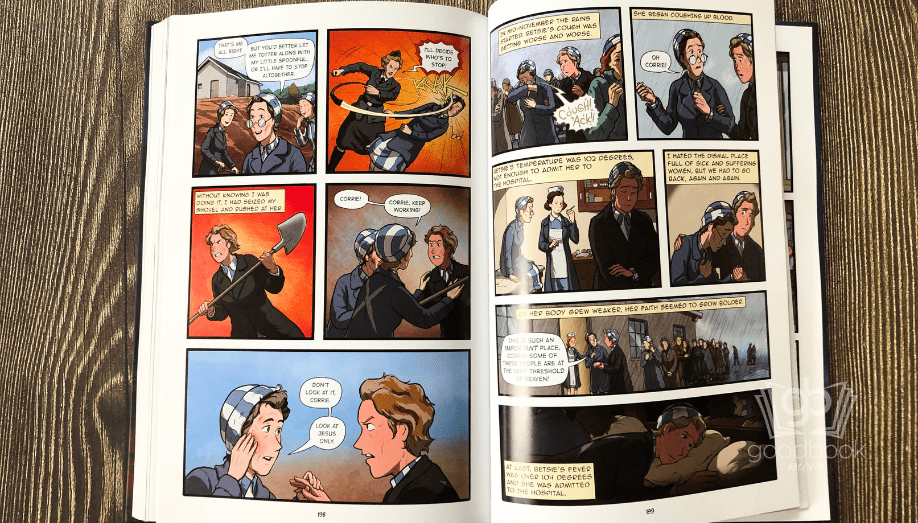
Summary
A graphic novel adaptation of Corrie Ten Boom’s classic autobiography, The Hiding Place.
Best suited for ages 8+, possibly older.
Mom Thoughts
Never would I have thought that a story like Corrie Ten Boom’s could be translated well to graphic novel style, but this book is fantastically executed. It will bring the incredible story of Corrie to new readers who may have had a hard time with her story in other formats. Because of the subject matter, there are some graphic illustrations that accompany Corrie’s difficult journey. (See below)
Some parents may not feel their child is ready to tackle these subjects, and if you are unsure, I recommend approaching it with much prayer. In my personal opinion, I do think it is helpful for children to grapple with the hard parts of history, even at a young age. Obviously, how much detail is given is up to the parent, but I was shocked at how my six-year-old was drawn into this graphic novel as I was reading it to myself. He had so many questions about the war, the holocaust, Nazis, freedom, and I was happy and ready to have those conversations in an age-appropriate way. All of my children (ages six, nine, and twelve) have been captivated by this book. My nine-year-old was so moved by it that she wants to read Corrie’s original work.
While there is much to list below because of the subject matter, I think this is a fantastic resource for Christian families.
Language:
As a flashback to her childhood, Corrie asks her father, “What is sex?” He answers with, “Some knowledge is too heavy for children. When you are older and stronger you can bear it. For now you must trust me to carry it for you.”
The Nazis insult the prisoners with words like scum and traitor.
Violence:
Nazi teens burn the beard on a Jewish man’s face.
A young man smashes an older man’s face into a brick wall.
There are several instances of Corrie and Betsy being hit or punched by Nazis.
A concentration camp prisoner is shown being thrown into the grave he just dug.
Several guns firing. Sometimes you just see a gun depicted, and sometimes you see the people too. I have added the most graphic illustrations below.
Concentration camp prisoners hear others being tortured.
Death:
There is much death alluded to and overtly mentioned, but there are two times a dead body is front and center of the illustrations. At the beginning of the book, a young child has died in their home. At the end of the book, Betsie’s body is shown after her death, but she looks beautifully peaceful and like she’s sleeping.
Sexual Content:
Besty and Corrie are told to “strip naked” at the concentration camp. The illustrations only depict from the shoulders up.
Other Things to Know:
Corrie lies to the Nazis about a radio.
There is a small depiction of someone vomiting.
Corrie and Betsy both have visions of things in their future, and both come to fruition.
During their bunkhouse worship services, it reads, “A single meeting might include a recital of the Magnificat in Latin by a group of Roman Catholics, a whispered hymn by some Lutherans, or a quiet chant by Eastern Orthodox women. At last, we would open the Bible. They were little previews of heaven, these evening services beneath the lightbulb.”
Corrie’s father says to a Jewish woman, “In this household, God’s people are always welcome.”
Speaking about their time in the awful Ravensbruck, it reads, “As we prayed, God spoke to us about the world after the war. God asked us what we were going to do in the years ahead. Betsy was always very clear about the answer for her and me.”





